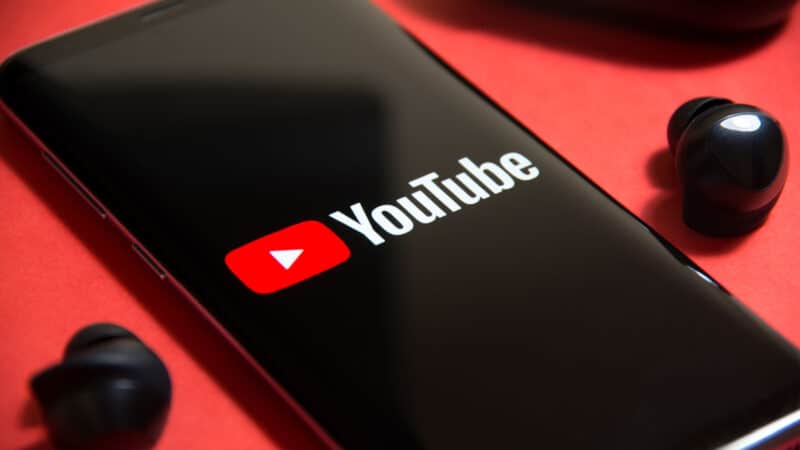
YouTube has long been a go-to advertising platform for B2C marketers, but it’s often still a question mark for B2B brands. I usually see B2B professionals on LinkedIn asking, “Has anyone had success with YouTube ads?” or “What’s the best way to approach video advertising for a B2B audience?”
YouTube can feel like unfamiliar territory if you’re only used to advertising on Google or social platforms. But that’s starting to change. More B2B brands are waking up to YouTube’s potential, and I couldn’t be happier.
I’ve seen firsthand how YouTube can elevate brand visibility, drive engagement and even accelerate the sales cycle for B2Bs.
If you’re still deciding or need guidance on where to start, here’s what you need to know. From video necessity to content strategy and production value – here are the YouTube ad questions B2B marketers ask most, answered.
1. Do we have to advertise with video?
Technically, no – you don’t have to do anything. But if you’re ignoring YouTube as an advertising channel, you’re likely missing out on one of the most effective platforms for reaching your audience.
Consider this:
- YouTube has over 2 billion monthly active users globally and is the second-largest search engine in the world.
- It’s not just for Millennials or Gen Z – Gen Xers alone account for 1.5 billion daily views, with 75% of people aged 35–53 watching at least monthly.
Testing the platform should be a no-brainer if your audience is on YouTube (and they are).
Dig deeper: YouTube adds new shopping features to increase seller revenue
2. Where should we start?
Begin by aligning expectations. Even the best one-minute video cannot close a complex B2B deal on its own. What it can do is start a conversation, educate and build trust – the things that move buyers through a long sales cycle. Think of YouTube as an opportunity to amplify your message.
3. What type of video content do we need?
It’s tempting to default to “sales pitch” mode and talk at your potential customers instead of to them. But the most effective B2B video content does three things:
- Answers questions.
- Builds trust.
- Educates.
Answer questions
Use your sales team as a resource and ask them what questions prospects have – and then make short videos that address those questions directly. Better yet, attend sales calls or listen to conversations on the trade show floor to learn what potential customers are thinking.
Build trust
Do you have any existing customer video testimonials that you can use in your advertising? If not – and if you have written testimonials – ask the customer for the opportunity to update the written testimonial by shooting a short video testimonial interview.
Educate
Demo your product in action, showing real-world applications and benefits, not just features. Help your audience visualize how it improves daily work life, simplifies tasks, or cuts costs. These practical insights often carry more weight with buying committees than a walk-through of features.
Dig deeper: YouTube is deliberately ‘suboptimal’ for people using ad blockers
4. How should we target our video ads?
YouTube’s targeting capabilities are incredibly granular, making it easy to get overwhelmed.
Here are three targeting examples to illustrate what’s possible.
Medical device company
- Create custom audience segments based on smaller, niche competitor websites that sell the same type of product as you.
- Avoid broad players like Medtronic, which may dilute targeting.
- You can also target visitors to specific medical journals or publications that publish content relevant to the type of medical device that you sell.
Corporate events company
- Use in-market audiences like “Event Planning Services” or “Corporate Event Planning.”
- You can also build audiences around your top-converting keywords tied to purchase intent.
Biosciences company
- Create customer audience segments that target websites where you’ve published research or articles, such as BioScience.
- If your product has frequent updates, consider remarketing or using customer match lists to re-engage existing contacts.
Whatever your niche, the key is continuously testing and refining your targeting.
5. How professional do our videos need to be?
There’s no one-size-fits-all answer here. Some marketers suggest a more casual, “authentic” look, which can work. But it’s not always the better option.
One of our clients ran a less-polished video for an annual event. The video featured handwritten messages on tearaway sheets with an off-screen narrator. It felt authentic but underperformed, with just a 6% view completion rate. In previous years, the completed view rate for this particular event ranged from 39% to 60%.
Bottom line: Test it.
Let performance – not assumptions – guide your production choices.
Dig deeper: Google launches AI tool for YouTube ad optimization
6. How long should our videos be?
That’s the question I hear most, and the answer is: it depends. Your best approach is often to shoot longer videos that you can repurpose. Think of it like writing a blog post. You start with a long-form piece and then slice it into smaller social snippets. That same logic applies here.
Don’t let longer videos scare you. I’d take a 5-minute video ad that provides value over a 30-second spot that says nothing meaningful any day of the week.
7. Is it worth having a celebrity spokesperson?
Short answer: it can be.
I’ve seen B2B clients dramatically boost engagement with the help of a celebrity – the credibility and name recognition can be powerful. But it’s not without risks.
Pros
If the celebrity aligns well with your audience, you’ll gain more visibility, higher engagement and an instant trust boost. One of our B2B clients recently partnered with a popular, well-known celebrity and the engagement on our video ads has been transformational.
Cons
It can be costly. I don’t know how my client landed their celebrity spokesperson, but I imagine it would be cost-prohibitive for many brands. There’s also the reputational risk if the celeb says or does something off-brand. Remember that celebrities rarely promote the content themselves. You’re still responsible for distribution.
If you have the budget and it makes strategic sense to hire a celebrity spokesperson, go for it.
Just go in with your eyes open.
Dig deeper: Salesforce partners with TikTok for social commerce
8. Is there anything else I should know?
Yes, put your branding at the start of the video.
Many B2Bs bury their logo or brand name at the end of their videos. That’s a missed opportunity. You’ve only got a few seconds to make an impression – don’t waste them.
YouTube is more than a playground for B2C brands
YouTube is a smart, scalable channel for B2B brands ready to meet their audience where they already spend time. That said, success doesn’t come from guesswork. It comes from testing.
Try different formats, targeting strategies and production styles. Review your metrics. Adjust. Repeat. Hit record – and see what YouTube can do for your B2B.
The post Your top B2B YouTube ads questions – answered appeared first on MarTech.
